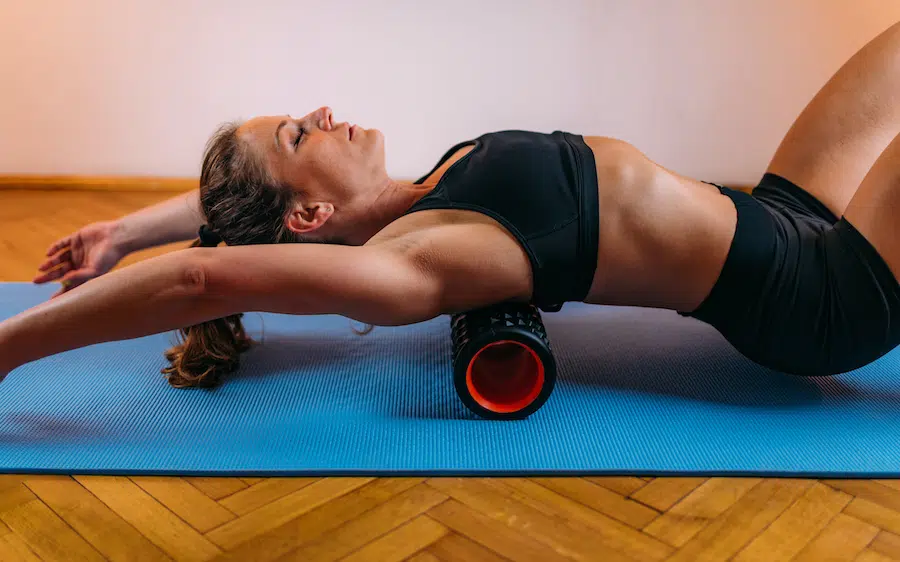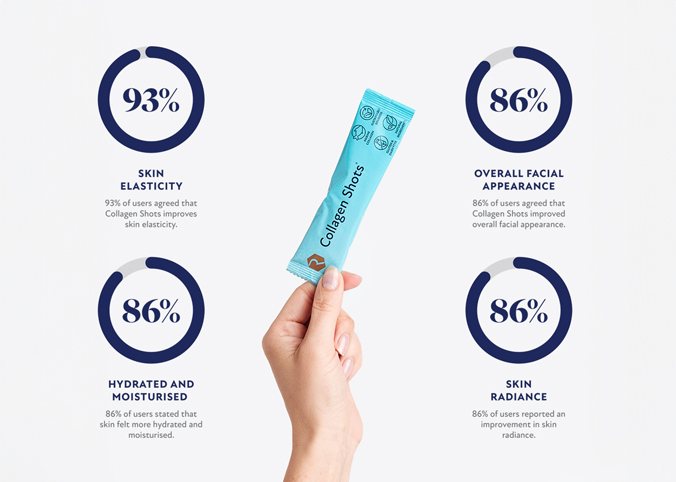What is fascia and how does collagen support it?

Our body is a truly amazing structure from our bones to our organs, muscles, joints, ligaments, and digestive system. You probably think that this incredible system is held up by our bones, but it is in fact held together by collagen acting as connective tissue in a network called fascia. Fascia holds our bones, organs, blood vessels, muscles, and nerve tissues. Without it we would be a heap of bones and skin on the floor.
It was originally thought that fascia only encased tissues in our body, but it has since been discovered that it can be found within tissues.
The easiest way to understand it is to think of the white fibres within an orange. It encases the orange; it surrounds the segments, and it can also be found within the fibres of orange slices.
What are the four types of Fascia?
There are four main types of fascia and these are: superficial, deep, visceral and spinal straw.
Superficial fascia
This is the deepest layer of the skin. If you have ever pulled away skin from raw meet you can see a fine white layer, this is fascia.
Deep Fascia
This layer is more fibrous and denser, it encases muscles and ligaments and connects them together to facilitate movement.
Visceral fascia
This fascia surrounds our internal organs and keeps them in place.
Spinal Straw
The spinal straw fascia is an incredibly dense casing which surrounds the spine. It’s designed to protect it from damage and to provide nourishment to the discs of the spine. When this fascia is tight it can cause shortening of the vertebrae.
What are the functions and tasks of fascia?
Fascia connects our body together
Fascia is everywhere in our body; it holds our body parts in place and connects them to each other. Healthy fascia stretches, moves, and relaxes with our muscles, it also surrounds nerves and blood vessels that connect each part of the body.
Responds to trauma
It reacts and responds to trauma. Fascia is responsible for creating scar tissue when we injure ourselves. When we become stiff, the fascia tightens up to prevent us from causing further damage. Massage ad stretching to relieve this tightness is important to prevent long term reduction in the range of motion.
Transmission
It transfers force from one muscle to another.
Fascia is a sensory organ
It responds to mechanical and chemical stimuli and provides a communication system from one part of the body to another. Surprisingly, it can achieve this more quickly and efficiently than the nerve endings.
Distributes nutrition
The fascial system absorbs nutrients from the capillaries to carry them throughout the body to deliver nutrients to cells and carry waste and unwanted material away. Excess toxins can be released from the system by gentle massage.
Storage of water
Fluid keeps fascia flexible; it can store water to maintain a healthy fluid balance.
Transmission of electrical energy
Fascia works in harmony with our natural electrical energy and vibrations to move them from body part to another.
What are the symptoms of unhealthy fascia?
Stiff legs, aching back, sore feet, are all signs of unhealthy fascia. Unhealthy fascia becomes thick, stiff and brittle and can be at the root cause of several health conditions.
Unhealthy fascia can be responsible for:
- Tightness in the body and reduces mobility
- Chronic pain
- The inability to absorb nutrients which leads to unhealthy cells
- Headaches and migraines
- Preventing the body’s natural energy flow
- Muscle tears
- Adhesions
What are adhesions?
Sometimes the fibrous fascia fibres become fused with surrounding tissues. These occur in sites of injury or micro trauma to become muscle adhesions or internal scars. Massage therapy can help to break down the scar tissue to improve the range of movement and relieve pain.
How to have healthy fascia
- Always work to have the correct posture to allow easy movement of muscles and joints
- Limit the amount of alcohol
- Eat anti-inflammatory foods these support the regeneration of connective tissue
- Include Protein in your diet. A plentiful supply of protein allows fascia to carry out crucial functions
- Take Collagen Shots, it’s 90% protein and provides the correct amino acids to build healthy collagen and fascia within the body
- Stretch daily to stay flexible, include yoga or Pilates in your workout program






